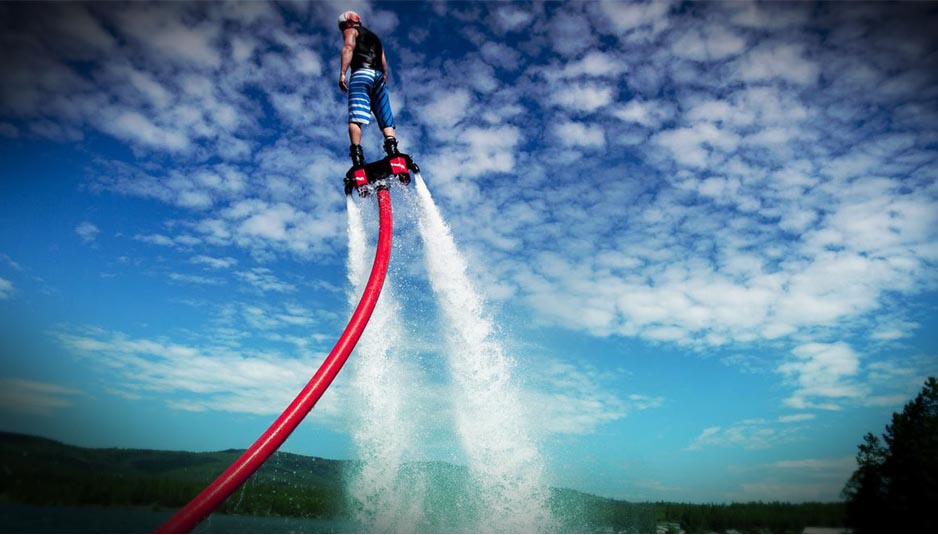Flyboard, the water jet pack
The Flyboard is a bolt on device that is attached to a jet ski and requires proper instructions and safety gear before being able to use the product successfully and efficiently.

gorgeflyboard.com
Who has not dreamed of whizzing at full speed, suspended in the middle-air over the water? Now it’s possible thanks to Flyboard, a device attached to a watercraft, that allows the propulsion in the air and underwater.
The Flyboard is a bolt on device that is attached to a jet ski and requires proper instructions and safety gear before being able to use the product successfully and efficiently. The PWC is powered from 100 horse power and up and follows the rider, permitting the freedom to go anywhere, even underwater. The thrust that comes from the PWC is run through a 180 degree adapter (which allows the rider to divert and control the device in any desired motion) and then goes into the hose that is 4 inches in diameter and roughly 55 feet long and has capabilities of putting the pilot above water 35 feet or below water 35 feet.
The hose is attached in a way so that the PWC follows behind the rider’s trail allowing the rider all types of freedom even allowing the rider to go under water if they desire. The pilot that is on the Flyboard is in complete control of the navigation while the throttle is controlled by the person in charge of the PWC. The pilot on the Flyboard is secured in by bindings similar to a wakeboard and the rider is propelled from water jets below the device. There are certain rules that one must go by when purchasing a Flyboard though. The Flyboard is buoyant for safety, which also allows the rider to rest in the water between rides if the rider happens to get fatigued. The use of a personal flotation device and helmet is recommended for safety purposes.
Two versions of the Flyboard exist: the Flyboard Standard Kit and the Flyboard Pro Rider Kit. The former is a board with hand-held stabilizers, which was the original design. The latter dispenses with the stabilizers.
Device power is controlled by a throttle on the PWC. The equipment may be used in two modes: the primary one requires two people, one to control the PWC throttle which regulates the power and height of the rider. The secondary mode relies on an accessory called an Electronic Management Kit (EMK) which allows the rider to control the jetski throttle.
